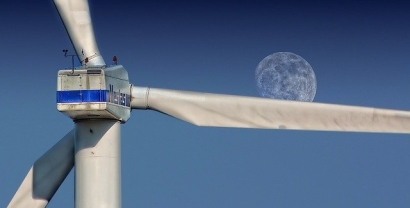
Condition monitoring has transformed the sector over the last 10 years, delivering £500 million in global annual revenue, lowering LCoE by 1.5%, virtually eradicating catastrophic failures, and making offshore wind viable. Despite rising costs across the value chain, wind remains a strong draw for investors.
However, many existing monitoring strategies fail to reflect wind energy's growing dynamism, even as the sector sees rapid technological and market change. This is leaving many owners and operators on the back foot, unable to leverage advances in sensing and analytics that promise huge strides.
The report examines why investing long-term, to future-proof assets and proactively tackle emerging challenges, is key to driving profitability and enabling wind to play its critical role in a low-carbon future. In doing so, it reveals five crucial project lifecycle events where owners and operators must scrutinize monitoring strategies to ensure optimized ROI:
1. End of Warranty (EoW)
Operators face critical choices around post-warranty service agreements and operating strategies at this point. It is typical for EoW inspections to be conducted as part of Original Equipment Manufacturer (OEM) full scope service agreements with very limited coverage of turbine components. But squeezed project margins and growing confidence in turbine technology is prompting a shift in behavior with more asset owners considering alternative options.
2. Operational stage
OEM service agreements might seem attractive due to short-term cost savings - but it can prove a false economy. There are question marks around whether OEMs and Operations & Maintenance (O&M) service providers are adequately incentivized to inform customers about impending failures in a timely manner - in contrast to third-party providers who must demonstrate value - and the impact this dynamic can have on O&M costs and best practice.
3. Portfolio growth and diversification
Extensive and rapid portfolio growth can create problems for owners and operators with in-house teams. According to ONYX Insight research, companies with portfolios over 1.5GW are set to increase the capacity they own by up to 60% by 2030, and the volume of mixed wind and solar portfolios will reach the same percentage five years earlier, 60% by 2025. At this volume, in-house teams can be overwhelmed, and hiring sprees - to address the issue - will not prove cost-effective.
4. Change of O&M contract or Mergers & Acquisitions
Condition monitoring is critical to de-risk transition, support valuations and increase buyer confidence by providing the equivalent of the 'full-service histories' of the automotive industry.
5. Late stage and life extension
Owners and operators must not only have a thorough understanding of the condition of towers, foundations, and blades but also the drivetrain and other replaceable components. And as the wind industry begins to look inwards, evaluating its own carbon contribution, there is a clear need for condition monitoring to support the recycling of parts, which can save up to 90% of energy during manufacturing compared to using a new part.
Evgenia Golysheva, VP Strategy and Operations at ONYX Insight, said: "Condition monitoring is one of the most powerful technologies operators have for transforming asset profitability, removing uncertainty, and improving confidence and control over budgeting decisions - from end of warranty through to repowering and life extension. The key to a successful monitoring strategy is thinking long-term and continuing to invest in comprehensive, proven solutions which deal not just with the challenges wind operators face today, but also those of tomorrow."

